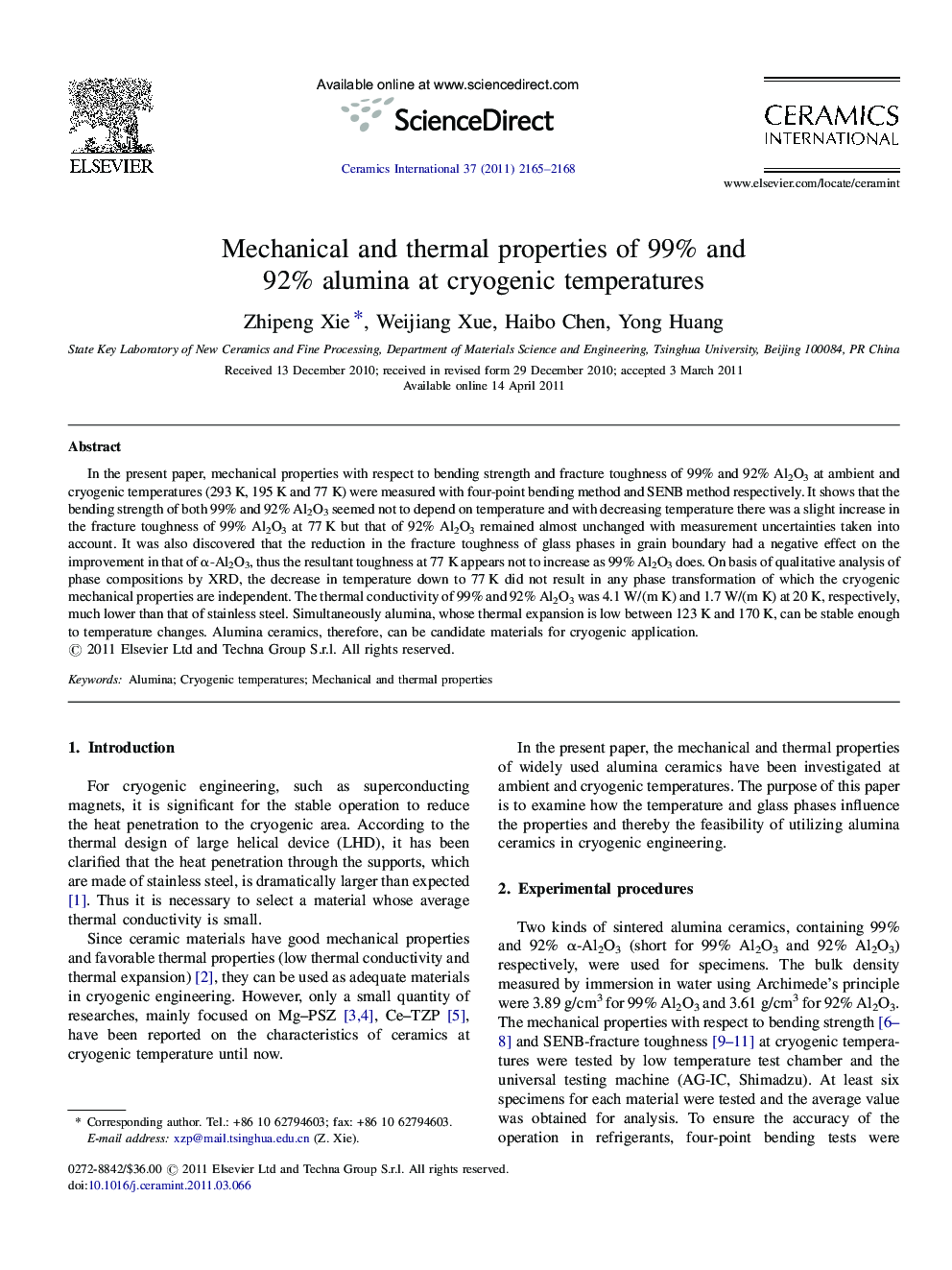| Article ID | Journal | Published Year | Pages | File Type |
|---|---|---|---|---|
| 1463186 | Ceramics International | 2011 | 4 Pages |
In the present paper, mechanical properties with respect to bending strength and fracture toughness of 99% and 92% Al2O3 at ambient and cryogenic temperatures (293 K, 195 K and 77 K) were measured with four-point bending method and SENB method respectively. It shows that the bending strength of both 99% and 92% Al2O3 seemed not to depend on temperature and with decreasing temperature there was a slight increase in the fracture toughness of 99% Al2O3 at 77 K but that of 92% Al2O3 remained almost unchanged with measurement uncertainties taken into account. It was also discovered that the reduction in the fracture toughness of glass phases in grain boundary had a negative effect on the improvement in that of α-Al2O3, thus the resultant toughness at 77 K appears not to increase as 99% Al2O3 does. On basis of qualitative analysis of phase compositions by XRD, the decrease in temperature down to 77 K did not result in any phase transformation of which the cryogenic mechanical properties are independent. The thermal conductivity of 99% and 92% Al2O3 was 4.1 W/(m K) and 1.7 W/(m K) at 20 K, respectively, much lower than that of stainless steel. Simultaneously alumina, whose thermal expansion is low between 123 K and 170 K, can be stable enough to temperature changes. Alumina ceramics, therefore, can be candidate materials for cryogenic application.
